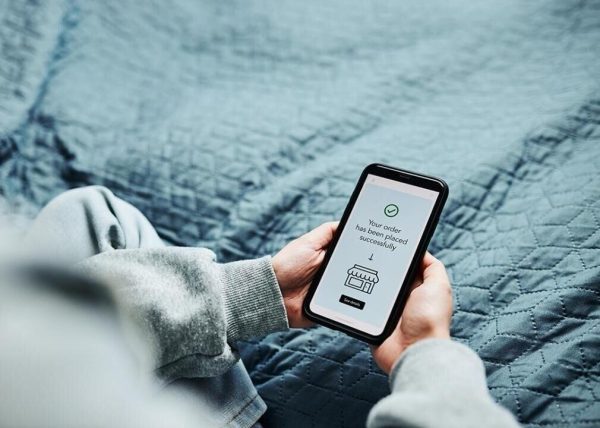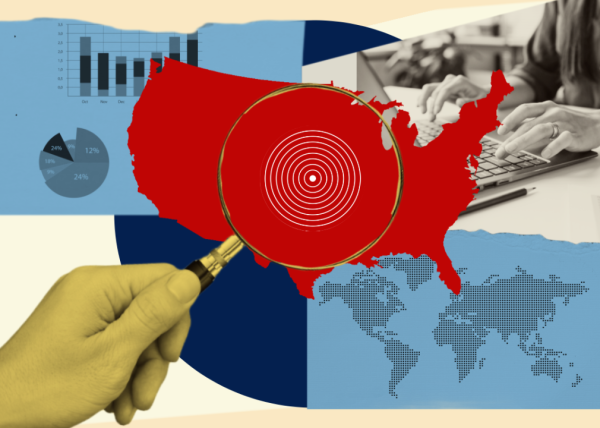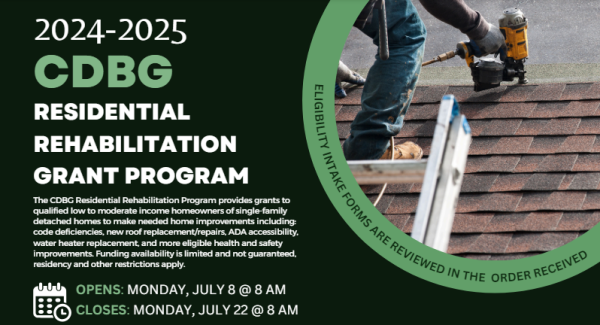Hectic work schedules and endless to-do lists characterize our fast-paced world. This means that managing household chores has become more and more challenging for many families. The traditional model of one parent staying at home to manage the household while the other works has shifted significantly. More families than ever before need both parents working full-time, which casts a spotlight on the need for convenient solutions to everyday tasks.
Tasks such as laundry, cleaning and grocery shopping can quickly pile up, leaving families with basically no time to spend together. However, the rise of personalized services offers a ray of hope for busy parents and families. By outsourcing these tasks, families can reclaim valuable time to spend with loved ones and on personal pursuits. To that end, hampr examines the many ways in which technology is revolutionizing household management.
Using technology for household tasks
One of the biggest challenges for busy parents and families is managing their household chores. In 2023, households where both parents are working is up to 49.7%, which is higher than it’s ever been. This leaves significantly less time for laundry, cleaning, grocery shopping and all the other endless tasks required to maintain a household. This is where personalized services can make a huge difference.
By outsourcing tasks like laundry or grocery shopping, parents can regain valuable time to spend with their children, each other and on the things they enjoy. Coming home from a long work day to fresh, folded laundry or a sparkling clean home is invaluable to working parents and anyone else who needs more flexibility in their schedule.
With the ability to tailor the services to fit their needs and preferences, technology plays a vital role in improving everyone’s lives. You can schedule a convenient pick-up and drop-off time for your laundry, request on-demand childcare or hire someone to come walk your dog without much effort. This is called “customized care.” Instead of a one-size-fits-all approach, you’re able to customize the services you need to fit your preferences, schedule and lifestyle. This applies in so many areas of life, from shopping to rideshares to laundry.
What is customized care?
Also called personalized care, customized care is any service tailored specifically to the needs of an individual customer. For consumers, this means you get a level of care and attention unlike ever before. As mentioned earlier, customized care means giving customers the ability to pick times, locations, specific services, or any other personalizations they want or need. This flexibility puts the power in the hands of the consumer and also means you’re never paying for a service you aren’t using or don’t need.
Changing customer expectations
In the past, customer service was seen as a one-size-fits-all situation. If someone came to a business with a problem, there was one answer. When that didn’t work out? Well, tough luck. Businesses were more focused on standardizing their approach to customer issues and efficiency. While efficiency is still important, personalization has become a main focus for consumers. 80% of customers want personalization from retailers, according to a 2018 survey.
The expectations of customers have evolved dramatically in recent years with the rise of technology and other companies pioneering the idea. Amazon changed retail overnight when it began offering standard two-day delivery. Suddenly, that became the new expectation for deliveries.
The same thing is happening before our eyes with customization as a service and in customer care. 52% of customers expect offers to be personalized and 83% of customers expect flexible shipping and fulfillment options, such as buy-online-pick-up-in-store. As technology continues to advance, consumers are more connected than ever before. The demand for personalized services has grown so much and will continue to do so.
Why is personalization so important?
As mentioned earlier, the main driving factors for the importance of personalization are technology and people’s expectations. Artificial intelligence and other tech advances have made it easier than ever before for companies to provide a customized experience to their customers. As people’s expectations of companies change, it’s necessary to keep up if a business wants to survive.
Another key factor is Gen Zers’ expectations. Every generation prioritizes convenience over brand, but none more than Gen Z. They’ve grown up in the age of swipe and tap for instant gratification. All they know is overnight delivery, food delivered to their door in an hour, and the answer to every question with the tap of a button. Every innovation and technological pioneer continues to add to these expectations.
The COVID-19 pandemic accelerated the use of digital technology and widespread participation in remote work. 61% of people in 2020 said they expected to spend more time online post-pandemic than they did before, and that has certainly proven to be true. This added even more fuel to the demand for personalized services that can be accessed from anywhere. 66% of customers expect companies to understand their unique needs and expectations.
How technology helps customize services
Have you ever called a company with an issue and only been transferred around to different departments to explain your situation over and over? Fifty-four percent of consumers say it doesn’t feel like sales, marketing and service talk to each other or share necessary information. This seriously damages the customer experience and can quickly cause frustration. Using technology efficiently can easily solve these types of issues in communication. Many common programs used by businesses offer the ability to add notes to explain situations or issues customers might be experiencing.
Advancements in technology have made it possible to customize services in a way that wasn’t possible before. Companies can use data analytics and algorithms to gain deeper insights into customer behavior, preferences, and needs. Using this information, businesses are able to tailor their customer interactions and offerings in a way that works with each individual person.
For example, e-commerce companies use data analysis to recommend products people might like based on what they’ve ordered or looked at before. This creates a more personalized shopping experience and often results in making a sale. Streaming services or video apps use algorithms to curate content based on a user’s viewing habits.
Overall, technology has revolutionized the way businesses interact with their customers. The ability to provide highly personalized experiences to every customer is extremely valuable. Meeting the needs of every customer, within reason, is good for everyone. The business benefits from happier, loyal customers. The consumer gets what they need in the way they want it, which makes them happy and makes their life easier. Before the rise of technology, particularly recent advancements in AI, this wouldn’t have been possible at the current scale.
Potential difficulties in personalization
While there are so many benefits to offering highly personalized services, there are also a fair share of difficulties. One major challenge is the issue of privacy and data security. In order to personalize services, companies collect and analyze huge amounts of data about their customers.
In 2020, 61% of consumers said they felt like they’ve lost control over how their personal information is used, and 86% of people said they wanted more transparency about how their data is used. Every data breach at a big company also raises the issue of how securely their data is stored as well.
Another problem is the potential for over-personalization. Too much of a good thing can turn personalization into something overwhelming and intrusive if not handled delicately. Have you ever had the experience where you were talking about something, and suddenly, you’re inundated with ads on every search engine or online marketplace? It’s a bit unsettling. Balancing personalization with respect for boundaries and preferences is a dance, but it’s important to keep customers happy.
Finally, the last issue is the risk of creating an echo chamber. Continually feeding similar products or services to people limits their exposure to new ideas or experiences. Personalized services tailor content based on past behavior, which only reinforces existing preferences and limits exposure to diverse perspectives. If overdone, this could possibly hinder growth and discovery.
Despite these challenges, personalized services have massive potential to improve the customer experience. It just needs to be done thoughtfully and ethically with keen attention to cybersecurity.
Customers benefit from personalized services
How do customers benefit from customized services? The main benefit people experience is convenience. By tailoring products and services to individual preferences, customers save time and effort when looking for what they need. For example, personalized recommendations on e-commerce sites can help customers find new products that align with their interests. This reduces or even eliminates the need to search through pages and pages of search results.
Personalization can also create a more enjoyable and engaging experience by improving the relevance of offerings to customers’ specific needs and interests. Not to mention, when customers feel understood and valued by a business, they’re more likely to return and make purchases again in the future. The flexibility to schedule on-demand services helps people feel understood by businesses. They’re also far more likely to recommend the brand to their friends or family. This helps create better relationships between customers and brands.
Customization helps customers make more informed purchasing decisions. This has the potential to help with cost savings. By helping customers make better, more informed decisions about their purchases, people save money by making the right purchase the first time. Overall, personalized services offer customers a more convenient and positive experience. This leads to more brand loyalty and a greater likelihood of a long-term relationship.
Community benefits of customized services
The rise of personalized services not only benefits individuals and families but also has a positive impact on the community as a whole. The rise of the gig economy has been a beacon of hope for people who otherwise might not be able to work. In the past, where traditional employment was the only option, caretakers had difficulty working.
By creating opportunities for flexible, on-demand work, these services help the local economy. It provides a lifeline for people who need a way to make money while being able to care for small children, elderly family members, or the sick.
Moreover, personalized services can help bridge the gap between demand and supply in local markets. For example, by connecting families with local caregivers, cleaners, or other service providers, these platforms make sure that resources are easily accessible, benefiting both service providers and customers.
Personalized services can also contribute to a sense of community cohesion. By making it easy to connect service providers and customers, these platforms create opportunities for meaningful connections and relationships to form. This can be particularly beneficial in urban areas where loneliness is a growing concern.
The future of personalized services
As technology continues to advance and consumer expectations evolve, the future of personalized services will only expand. One key trend that is expected to shape the future of personalized services is AI and machine learning algorithms. These technologies have the potential to revolutionize the way personalized services are delivered. They allow companies to analyze vast amounts of data and tailor their offerings to individual preferences and behaviors.
Another important development in the future of personalized services is something called “anticipatory design.” Anticipatory design uses data and predictive analytics to expect the needs and preferences of customers before they are even aware of them. This allows companies to offer personalized recommendations and solutions, which continue to improve the customer experience. The future of personalized services continues to change, with new innovations happening all the time.
In conclusion
The use of technology in household management has brought about a major shift in how families approach their daily chores. Personalized services have emerged as pioneers of efficiency and convenience, offering families more time to focus on what truly matters. As technology continues to advance and consumer expectations evolve, the future of personalized services holds huge promise.
By harnessing the power of technology, families can look forward to a future where household tasks are seamlessly integrated into their daily routines. Through innovative solutions and a commitment to meeting the unique needs of every customer, the personalized services industry is poised to redefine the way families manage their homes for years to come.
Written by Lauren Thayne.
This story was produced by hampr and reviewed and distributed by Stacker Media. The article was retitled and copy edited from its original version.
Re-published with CC BY-NC 4.0 License.







